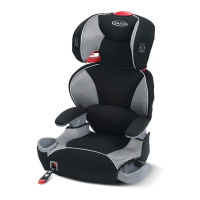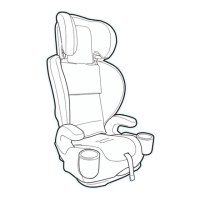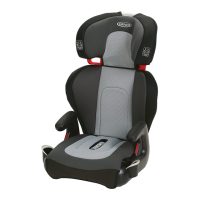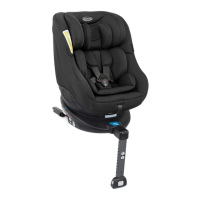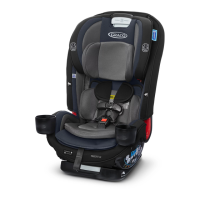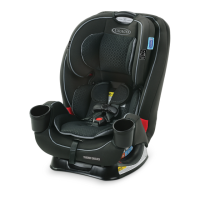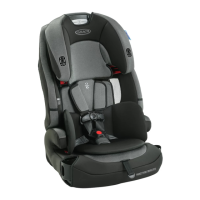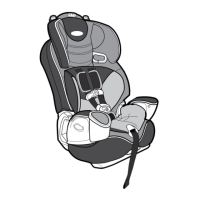24
3-A Booster Use
Booster Use With Back:
40-100 lb (18.1-45 kg) 43-57 in.
(110.1-145 cm) at least 4 years old
Booster Use Without Back: 40-100 lb (18.1-45
kg) 43-57 in. (110.1-145 cm) at least 4 years old
• Place car seat forward-facing in the vehicle back seat.
• Make sure vehicle seat’s lap belt is adjusted snugly and
lays low on the child’s hip and is routed in front of the
armrest in the booster’s belt path.
• Vehicle belts MUST lie flat against child and MUST NOT
be twisted.
• Vehicle seat’s shoulder belt is adjusted snugly and should
lie between child’s neck and edge of shoulder.
• DO NOT position vehicle shoulder belt under the child’s
arm or back.
Vehicle Lap/Shoulder
Belt
Vehicle Lap/Shoulder
Belt
• Never use a vehicle lap-only belt across front of child.
• DO NOT allow child to slouch or slide down in the booster
seat.
• DO NOT position vehicle belt over top of armrests.
• Vehicle’s seat headrest SHOULD NOT create a gap
between vehicle seat and booster seat.
• The front of booster seat MUST NOT hang over front of
vehicle seat.
• If child will not keep vehicle belt properly positioned, DO
NOT use this booster seat. Use a different car seat.
When forward-facing, children should use the built-in
harness system for as long as possible until they reach
the maximum forward-facing weight or height for their car
seat. At that point, children should ride in a belt-positioning
booster seat. A booster is no longer needed once the vehicle
seat belt fits properly, typically when they reach 4 feet 9
inches (145 cm) tall and are between ages 8-12. Be sure to
check your local and state laws, as well as AAP and NHTSA
recommendations, for car seat usage.

